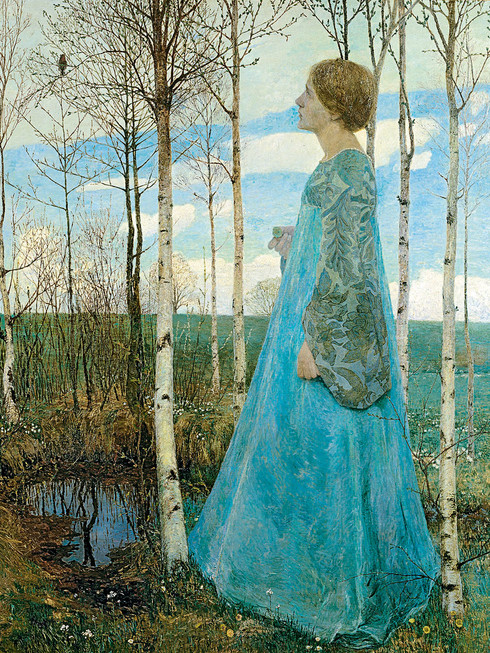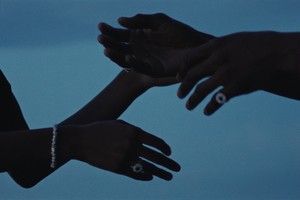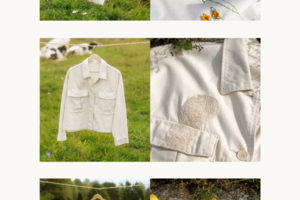Paula Modersohn-Becker and the Worpswede Artists’ Colony
Written by Fashion TalesFor the first time ever in Sweden, a more comprehensive presentation of the artists’ colony founded in 1889 in the village of Worpswede just outside Bremen is being exhibited. The Worpswede colony, the best known artists’ colony in Germany, was to be the haunt of a number of eminent German artists and writers in the years around 1900. The exhibition comprises about 70 works and offers a unique opportunity to discover a visual world which, despite its fascination, is virtually unknown in Sweden. These include works by the internationally acclaimed painter Paula Modersohn-Becker as well as Otto Modersohn, Heinrich Vogeler, Ottilie Reylaender and others.
In recent years Prince Eugen’s Waldemarsudde has focused on the significance of artists’ colonies in the late 19th and early 20th century for art in Europe. Our studies of artists’ colonies as phenomena is now being supplemented by this extensive exhibition about the artists’ colony in the German village of Worpswede. This is the first exhibition in Sweden that focuses on these expressive works with their atmospheric landscapes, sensitive depictions of the poor north-German peasantry, portraits and evocative motifs from myths and folk-tales painted by the artists at Worpswede around the year 1900.
The exhibition, which contains about 60 paintings and a number of drawings and prints offers visitors a chance to make the acquaintance of very interesting visual art that is virtually unknown in Sweden. Today Paula Modersohn-Becker is the most acclaimed and famous Worpswede artist and the one most richly represented in the exhibition through the loan of 17 of her works. Particular focus has been placed on the period in which she was active at Worpswede. Other artists exhibited are Otto Modersohn, Heinrich Vogeler, Ottilie Reylaender, Hans am Ende, Fritz Overbeck, Hermine Overbeck- Rohte, Fritz Mackensen and Marie Bock. There are also references to the famous poet Rainer Maria Rilke, who spent some time at Worpswede, in the exhibition and the catalogue. The works on display have been loaned to us by a large number of museums, collections and private individuals in Germany. Worpsweder Museumsverbund has been an important partner in the extensive work on this exhibition.
“As the museum’s Director General and exhibition’s curator, when I made a visit to Worpswede, I became fascinated by the atmosphere there: the ehtereal alleys of birch trees in the flat landscape that surrounds the village, the calmly flowing waterways as well as by the beautiful works created there at the turn of the century around 1900. It is with great pleasure and pride that this autumn Waldemarsudde can now enable visitors to experience the atmospheric landscapes, psychologically penetrating depictions of people and the wealth of polysemously symbolic fairy-tale motifs offered by around 70 works that have been generously loaned to us by a large number of museums and collections in, for instance, Worpswede, Fischerhude, Bremen and elsewhere in Germany,” says Waldemarsudde’s Director General, Karin Sidén.
The exhibition is supplemented by a profusely illustrated catalogue with articles by German, French and Swedish experts. In connection with the opening of the exhibition the publishing company Norstedts is issuing a Swedish translation of the acclaimed novel by the French author Marie Darrieussecq about Paula Modersohn-Becker’s brief life and interesting oeuvre, Être ici est une splendeur. Marie Darrieussecq is also one of the contributors to the museum’s exhibition catalogue together with a couple of German and Swedish experts. The exhibition also includes a slide show, a concert, lectures (among them one by Marie Darrieussecq) and a programme for children and young people.
The exhibition runs between 15 September 2018 – 27 January 2019
Picture 1) Heinrich Vogeler, Vår, 1897. Olja på duk, 175 x 150 cm. Niedersächsische Sparkassenstiftung und Waldemar Koch Stiftung. Deponerad vid Heinrich Vogeler Stiftung Haus
Picture 2) Paula Modersohn-Becker, Betande skimmel i månskenet, 1901. Olja på kartong och trä, 50 x 56,4 cm. Otto Modersohn-Museum, Fischerhude.














